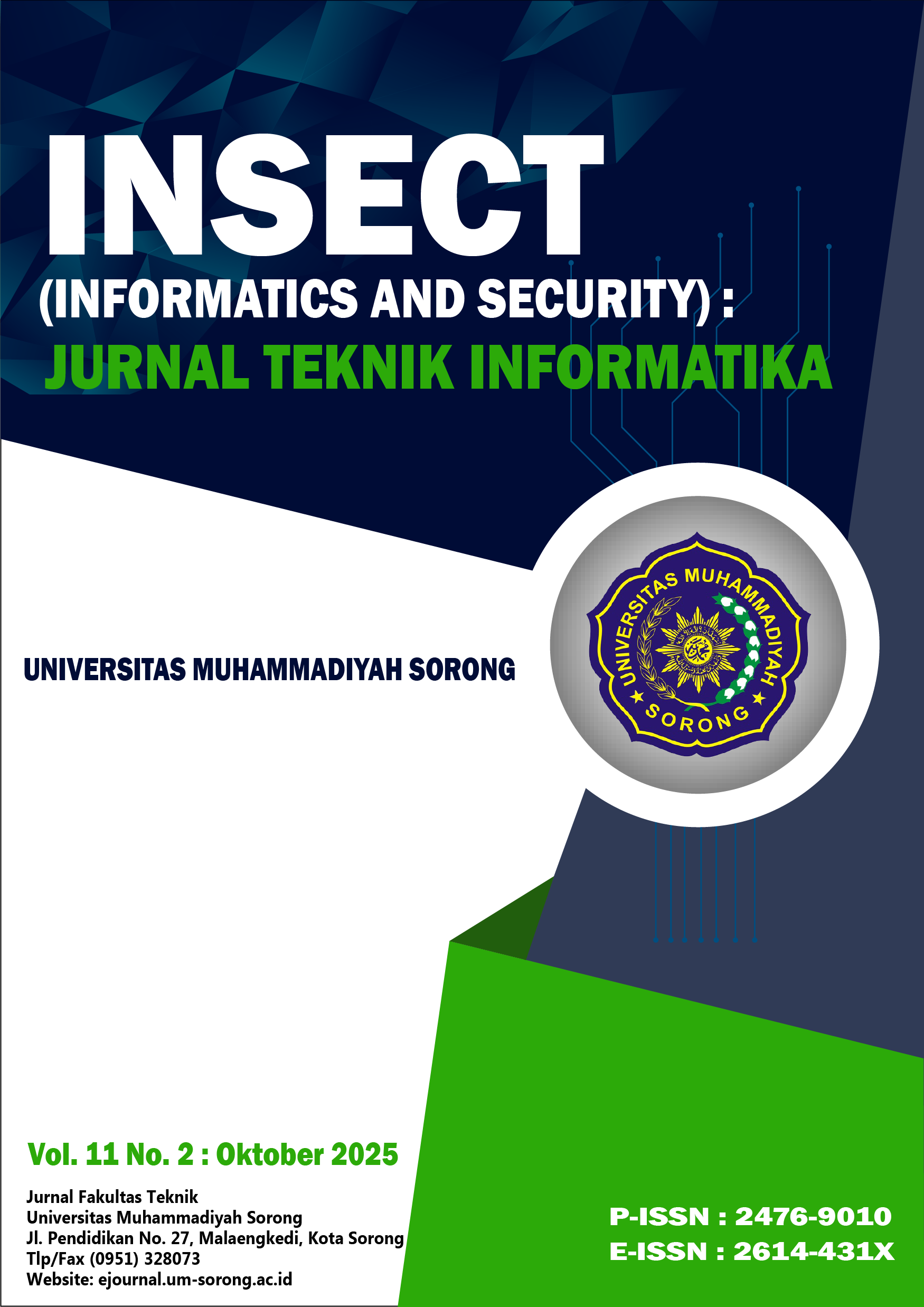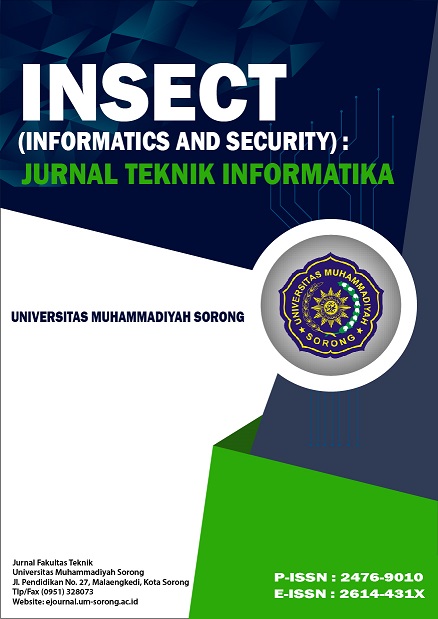XceptionNet Based Digital Image Forensics with DFRWS Framework for Deepfake Detection
DOI:
https://doi.org/10.33506/insect.v11i2.4996Keywords:
Deepfake, XceptionNet, Digital Forensics, DFRWSAbstract
This study presents a novel approach to deepfake detection by integrating the DFRWS (Digital Forensics Research Workshop) framework with a deep learning architecture based on XceptionNet. The rapid advancement of deepfake technology poses a significant threat to digital media authenticity, necessitating robust and reliable detection methods. In this work, we implement a fine-tuned XceptionNet model enhanced with additional regularization techniques, specifically focusing on facial feature analysis. The model is trained on a balanced dataset comprising 2,000 images, equally divided between authentic and deepfake samples. Experimental results demonstrate exceptional performance, achieving an accuracy of 91.25%, precision of 88.73%, recall of 94.50%, and an AUC score of 0.9710. The proposed model shows a significant improvement in detecting subtle manipulation artifacts while maintaining computational efficiency, offering a promising solution for practical deepfake identification in real-world scenarios.
References
[1] A. Saxena et al., “Detecting Deepfakes: A Novel Framework Employing XceptionNet-Based Convolutional Neural Networks,” Trait. du Signal, vol. 40, no. 3, pp. 835–846, 2023, doi: 10.18280/ts.400301.
[2] M. Karaköse, İ. İlhan, H. Yetiş, and S. Ataş, “A New Approach for Deepfake Detection with the Choquet Fuzzy Integral,” Appl. Sci., vol. 14, no. 16, 2024, doi: 10.3390/app14167216.
[3] L. Verdoliva, “Media Forensics and DeepFakes: An Overview,” IEEE J. Sel. Top. Signal Process., vol. 14, no. 5, pp. 910–932, 2020, doi: 10.1109/JSTSP.2020.3002101.
[4] M. Elpeltagy, A. Ismail, M. S. Zaki, and K. Eldahshan, “A Novel Smart Deepfake Video Detection System,” Int. J. Adv. Comput. Sci. Appl., vol. 14, no. 1, pp. 407–419, 2023, doi: 10.14569/IJACSA.2023.0140144.
[5] D. Gong, Y. J. Kumar, O. S. G. Z. Ye, and W. Chi, “DeepfakeNet, an Efficient Deepfake Detection Method,” Int. J. Adv. Comput. Sci. Appl., vol. 12, no. 6, pp. 201–207, 2021, doi: 10.14569/IJACSA.2021.0120622.
[6] Z. Guo, G. Yang, J. Chen, and X. Sun, “Fake face detection via adaptive manipulation traces extraction network,” Comput. Vis. Image Underst., vol. 204, no. January, p. 103170, 2021, doi: 10.1016/j.cviu.2021.103170.
[7] R. Caldelli, L. Galteri, I. Amerini, and A. Del Bimbo, “Optical Flow based CNN for detection of unlearnt deepfake manipulations,” Pattern Recognit. Lett., vol. 146, pp. 31–37, 2021, doi: 10.1016/j.patrec.2021.03.005.
[8] A. Kohli and A. Gupta, “Detecting DeepFake, FaceSwap and Face2Face facial forgeries using frequency CNN,” Multimed. Tools Appl., vol. 80, no. 12, pp. 18461–18478, 2021, doi: 10.1007/s11042-020-10420-8.
[9] J. Liu, K. Zhu, W. Lu, X. Luo, and X. Zhao, “A lightweight 3D convolutional neural network for deepfake detection,” Int. J. Intell. Syst., vol. 36, no. 9, pp. 4990–5004, 2021, doi: 10.1002/int.22499.
[10] Y. Patel et al., “An Improved Dense CNN Architecture for Deepfake Image Detection,” IEEE Access, vol. 11, no. January, pp. 22081–22095, 2023, doi: 10.1109/ACCESS.2023.3251417.
[11] O. A. H. H. Al-Dulaimi and S. Kurnaz, “A Hybrid CNN-LSTM Approach for Precision Deepfake Image Detection Based on Transfer Learning,” Electronics, vol. 13, no. 9, 2024, doi: 10.3390/electronics13091662.
[12] A. Chintha, A. Rao, S. Sohrawardi, K. Bhatt, M. Wright, and R. Ptucha, “Leveraging edges and optical flow on faces for deepfake detection,” IJCB 2020 - IEEE/IAPR Int. Jt. Conf. Biometrics, 2020, doi: 10.1109/IJCB48548.2020.9304936.
[13] A. Saxena et al., “Detecting Deepfakes: A Novel Framework Employing XceptionNet-Based Convolutional Neural Networks,” Trait. du Signal, vol. 40, no. 3, pp. 835–846, 2023, doi: 10.18280/ts.400301.
[14] T. M. Jawad Abbas and A. S. Abdulmajeed, “Identifying digital forensic frameworks based on processes models,” Iraqi J. Sci., vol. 2021, pp. 249–258, 2021, doi: 10.24996/ijs.2021.SI.1.35.
[15] Pollitt MM. 2007. An ad hoc review of digital forensic models. Conference: Second .IEEE International Workshop on Systematic Approaches to Digital Forensic Engineering, SADFE 2007, 12-Seattle, Washington, USA, April 10, 2007.

Downloads
Published
How to Cite
Issue
Section
License
Copyright (c) 2025 Muh. Hajar Akbar Akbar, Jimsan Jimsan, Yahya Yahya, Ilcham Ilcham, Nasrullah Nasrullah

This work is licensed under a Creative Commons Attribution-ShareAlike 4.0 International License.







